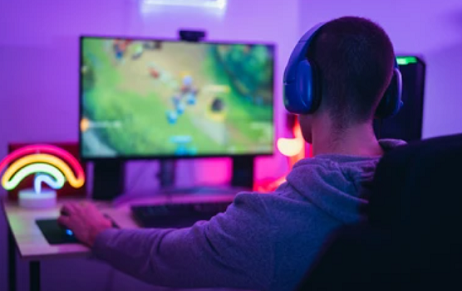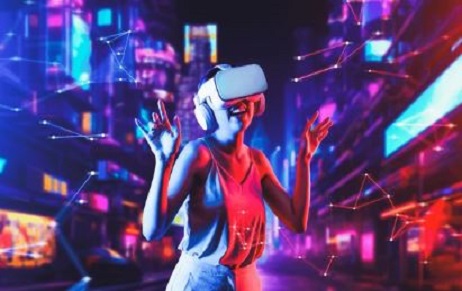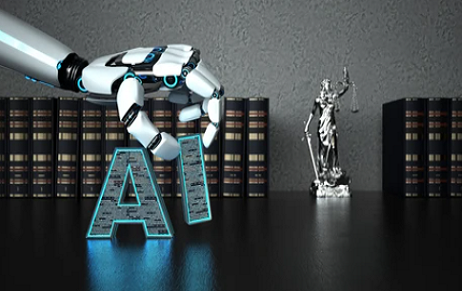INTRODUCTION Being applicable in many ways virtual reality or VR has now revolutionized several industries…
IP Protection For Video Games
Introduction
India’s gaming market is valued at $1.8 billion and is expanding at a rate of 38% per year. More than 15,000 game developers and more than 275 gaming firms operate in India. By 2025, India can account for 5% of the worldwide market share in the gaming and animation industries, generating 1.60 lakh new employment.[i]An electronic game having a plot and entertaining audio-visual elements that is played on a screen is called a video game. But, there’s always a chance that the game’s original creators won’t be the ones to bear the losses if someone else steals the game’s soundtrack, graphics, narrative, characters, and colour scheme. At the moment, India lacks legislation that expressly safeguards the video game industry’s intellectual property rights.[ii]
How Infringement Of IP Of Video Games Happen
Reverse engineering, which involves locating the game’s source code and utilising software or manual in-game partinsertion to remove required components, is a practice that violates the intellectual property rights of video games. By doing this, the person who is making the allusion to a video game makes their own version of the same game.[iii]by copying the name, character, colour, and design of the game. using the same trademark, making it unclear to players which is the original, confusing them. The games are sold even without a licence, and now that user-generated content (UGC) is interfering with the game and allowing users to add new elements, there’s a new concern over IP protection in video games. Such strategies constitute a violation of a video game’s intellectual property rights.
How IP Rights Of Video Games Can Be Protected Patents
An original invention is awarded a patent, which gives its owner the usage rights. When it comes to video games, patents are available for everything from controllers to the microprocessor that controls the system to every physical component that sets the game apart from others. The progress of technology has led to the illicit duplication or dissemination of material by authors. Consequently, artists have to bear losses. Video game creators use software that consists of a number of digital protections known as Technological Protection Measures to solve this problem.[iv]Using this software, video game developers protect their content.[v]In Magnavox Co. vs. Activision, Inc.,[vi]“similar to digital ping-pong, Magnavox had created a gaming system for two players wherein they may release a white dot ball to go forward and backward. For this, Magnavox was given a patent. Activision games from the 1980s were exactly the same as the Magnavox game patent and had a format comparable to Magnavox games. Activision was held accountable by the judge.”
[Image Sources: Shutterstock] Trademark
Trademark
The trademark set apart different elements of video games. It may be a character from the game or a phrase, letter, gadget, name, or logo. Without trademark protection, players won’t be able to distinguish between the original game and the gadget they’re using. Think about this: Thousands of identical logos will appear when you search for Subway Surfers on the Play Store. Finding the original logo among thousands of them becomes difficult. In ESS Entertainment 2000 vs. Rockstar Games, Inc.,[vii]in the video game “Theft Auto: San Andreas,” created by Rockstar Games, the city of “Los Santos,” which is modelled after Los Angeles, is depicted. Play Pen Gentleman’s Club is a club run by the ESS Entertainment Company in Los Angeles.
This served as inspiration for the “Pig Pen” locale in the game, which has the same sign. In this case, the court employs the Rogers vs. Grimaldi[viii] test. It is a two-pronged test that states that using a trademark for artistic work is not an infringement “unless or until there is no artistic connection to the work of the trademark the use of the mark has no artistic connection to the underlying work at all, or unless it misleads in finding the source of content’s work.”[ix]The court determined that no such confusion existed in the current case and that no infringement occurred.
Copyright
Video games are not explicitly protected under the Copyright Act, but they are protected in the realm of literary and artistic works. It provides economic and moral rights protection to the developer’s artistic works under Sections 14[x] and 57[xi] of the Copyright Act. The TRIPS agreement, an agreement between the members of the World Trade Organization discusses the creator’s Intellectual Property Rights and how to protect them. Article 11[xii] of this agreement discusses the Rental Rights available to the developer, and it is the responsibility of the member nation to ensure that they are not violated by copying the content, resulting in the developer’s loss.[xiii] This is also binding on India because it is a member of it. Video games are not explicitly protected under copyright law, but audio-visuals are.
Conclusion
With the implementation of intellectual property laws, gaming innovation and accessibility are on the rise. The game, however, would be over if intellectual property rights were not protected.[xiv] When there are no laws in place, it is difficult to protect a video game’s intellectual property. However, lawmakers should recognise as soon as possible that the creativity required to create video games must be protected so that creators are aware of the legal issue ahead of time.[xv] As a result, there is an urgent need to amend the aforementioned laws and include an explicit provision for video game protection. International law protection is urgently needed for the protection of the video game industry, to which the WIPO study[xvi] also agrees.[xvii]As a result, we anticipate new laws protecting intellectual property of video games in the near future.
Author: Abhishek Singh, in case of any queries please contact/write back to us via email to [email protected] or at IIPRD.
[i]<https://www.investindia.gov.in/sector/media/gaming#:~:text=Segments%20of%20digital%20games%20and%20sports%20in%20India,estimated%20to%20have%20over%2017%20million%20esports%20user?msclkid=d7c4ad12c75811ecafd41088ada3e074> accessed 5 September 2022
[ii]Amey Jadhav, ‘Copyright Act, 1957 and Video Games’ (Khurana & Khurana Advocates and IP Attorneys, 2 December 2021) <https://www.khuranaandkhurana.com/2021/12/02/copyright-act-1957-and-video-games/>accessed 5 September 2022
[iii]Juanda Maria Angelia Yolesa, Annisa Mayu Mulia & Camellia Anand, ‘Copyright Protection of Video Game for Game Developer in Indonesia’ (2019) 2 Notaire, 213
[iv]<Technological Protection Measures (TPM) – Fact Sheet | SFU Library> accessed 5 September 2022
[v]Frank W. Culler Jr., ‘Game On: How IP Helps the Video Game Industry Level Up’ (IP WatchDog, 16 June 2021) <https://www.ipwatchdog.com/2021/06/16/game-ip-helps-video-game-industry-level/id=134628/> accessed 5 September 2022
[vi]Magnavox Co. vs. Activision, Inc 848 F.2d 1244 (May 09, 1988)
[vii]E.S.S. Entm’t 2000, Inc. v. Rock Star Videos, Inc., 547 F.3d 1095, 1097 (9th Cir. 2008)
[viii]Rogers v. Grimaldi, 875 F.2d 994, 999 (2nd Cir. 1989)
[ix]Rogers, 875 F.2d at 999
[x]The Copyright Act, 1957, s 14
[xi]The Copyright Act, 1957, s 57
[xii]<WTO | intellectual property (TRIPS) – agreement text – standards>accessed 5 September 2022
[xiii] Trade-Related Aspects of Intellectual Property Rights, Art. 11
[xiv] Frank W. Culler Jr., ‘Game On: How IP Helps the Video Game Industry Level Up’ (IP WatchDog, 16 June 2021) <https://www.ipwatchdog.com/2021/06/16/game-ip-helps-video-game-industry-level/id=134628/>accessed 5 September 2022
[xv]Anna Piechowka (n 21)
[xvi]<video_games.pdf (wipo.int)> accessed 5 September 2022
[xvii] Yash Raj, ‘The Lacuna in the Indian Copyright vis-a-vis Video Games’ (NLUJ Law Review, 3 June 2020) <www.nlujlawreview.in/the-lacuna-in-the-indian-copyright-law-vis-a-vis-video-games/>accessed 5 September 2022

 Trademark
Trademark

